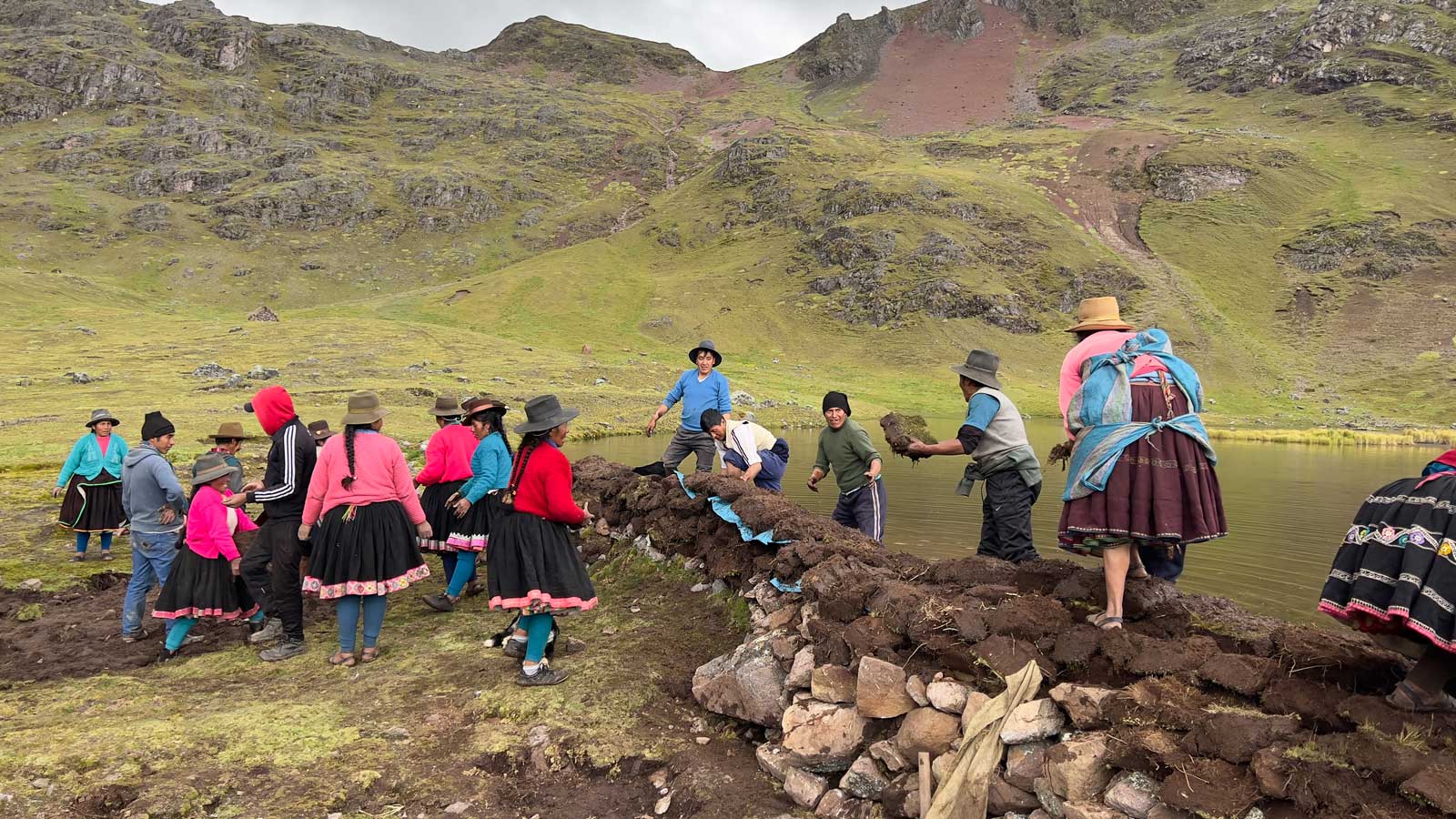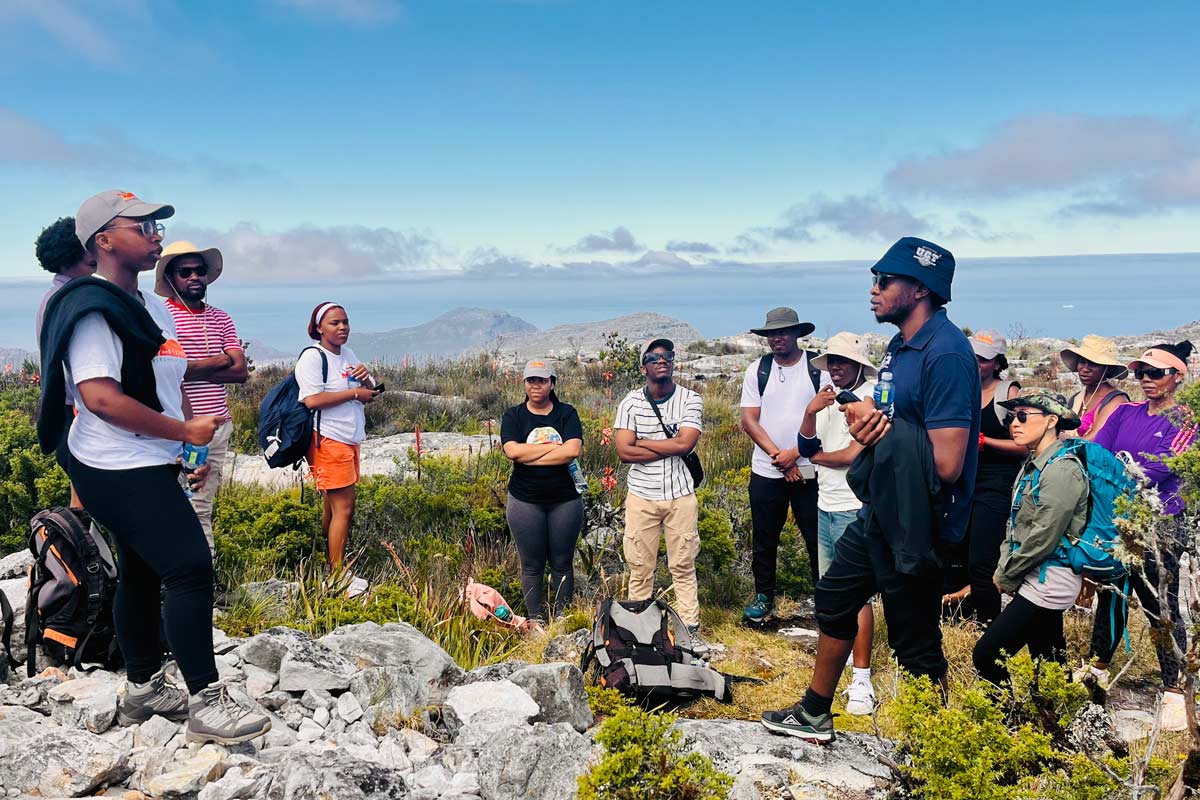Linda McMillan, the new president of the UIAA Mountain Protection Commission, presents her vision of how climbers, mountaineers and trekkers can help study and protect mountain environments.
In the following article, McMillan argues that the UIAA can “claim the high ground” on mountain protection:
From my work with the IUCN’s Mountains Biome group, I see the need and the opportunity to bring three important mountain stakeholder groups—science, sport, and tourism—together to improve mountain protection around the world. Most scientists have not yet realized the great natural potential of sport and tourism to help them to document, understand, preserve and protect precious natural and cultural resources in mountain regions.
Some mountain tourists such as trekkers, and mountain sports enthusiasts such as climbers and mountaineers have proven to be highly motivated and effective mountain stewards when given the chance to participate (either as volunteers or paid assistants) in compelling projects. This is especially so when projects are focused on threats such as climate changes, loss of biodiversity, waste management, protecting fresh water sources, etc.. The lichen inventories done by climbers in Yosemite (2007 and 2008) are examples of these types of projects. The climbers who gather species samples for the GLORIA Project around the world are another example. Dawa Steven Sherpa’s EcoEverest Expedition in 2008 demonstrating effective human waste and trash removal systems is another great example.
These successful types of projects done in collaboration with scientists from major NGOs and land management agencies provide global credibility and publicity for the UIAA and its goals, members and national climbing communities. Though some projects require volunteers, others offer monetary compensation or attractive tradeoffs for participation. For instance, a high-altitude species inventory by scientists could invite mountaineers on an all-expenses paid expedition to gather samples on unclimbed or popular mountain peaks.
During the next four years lLinda McMillan, the new president of the UIAA Mountain Protection Commission, presents her vision of how climbers, mountaineers and trekkers can help study and protect mountain environments.
In the following article, McMillan argues that the UIAA can “claim the high ground” on mountain protection:
From my work with the IUCN’s Mountains Biome group, I see the need and the opportunity to bring three important mountain stakeholder groups—science, sport, and tourism—together to improve mountain protection around the world. Most scientists have not yet realized the great natural potential of sport and tourism to help them to document, understand, preserve and protect precious natural and cultural resources in mountain regions.
Some mountain tourists such as trekkers, and mountain sports enthusiasts such as climbers and mountaineers have proven to be highly motivated and effective mountain stewards when given the chance to participate (either as volunteers or paid assistants) in compelling projects. This is especially so when projects are focused on threats such as climate changes, loss of biodiversity, waste management, protecting fresh water sources, etc.. The lichen inventories done by climbers in Yosemite (2007 and 2008) are examples of these types of projects. The climbers who gather species samples for the GLORIA Project around the world are another example. Dawa Steven Sherpa’s EcoEverest Expedition in 2008 demonstrating effective human waste and trash removal systems is another great example.
These successful types of projects done in collaboration with scientists from major NGOs and land management agencies provide global credibility and publicity for the UIAA and its goals, members and national climbing communities. Though some projects require volunteers, others offer monetary compensation or attractive tradeoffs for participation. For instance, a high-altitude species inventory by scientists could invite mountaineers on an all-expenses paid expedition to gather samples on unclimbed or popular mountain peaks.
During the next four years leading the Mountain Protection Commission I plan to:
expand its membership with up to 20 active members representing the major mountain regions of the world
help our Commission members work with scientists, academics, government agencies, and mountain-related NGOs from their regions to find ways to include mountaineers and climbers in projects focused on understanding and protecting mountain environments around the world
transform mountaineers and climbers into highly-skilled and valuable “citizen scientists” who can help land managers around the world to preserve and protect mountain environments from impacts such as pollution and global climate change.
Achieving this would give the UIAA a solid platform for strengthening and leveraging our relationships with the IUCN and United Nations’ Food and Agriculture Organization (FAO), which both have intense interest in promoting sustainable tourism in mountain and forest regions of the world.
It also importantly allows climbers and mountaineers to clearly “claim the high ground” as historic leaders of mountain protection in the tradition of John Muir, Theodore Roosevelt, and many alpine clubs and climbing associations around the world. It moves us into a very advantageous position of respect, inclusion and empowerment in future land management decisions. The work of the Mountain Protection Commission will prove that climbers and mountaineers can effectively protect mountains with land managers, and serve as high-profile role models for other mountain stakeholder groups.eading the Mountain Protection Commission I plan to:
expand its membership with up to 20 active members representing the major mountain regions of the world
help our Commission members work with scientists, academics, government agencies, and mountain-related NGOs from their regions to find ways to include mountaineers and climbers in projects focused on understanding and protecting mountain environments around the world
transform mountaineers and climbers into highly-skilled and valuable “citizen scientists” who can help land managers around the world to preserve and protect mountain environments from impacts such as pollution and global climate change.
Achieving this would give the UIAA a solid platform for strengthening and leveraging our relationships with the IUCN and United Nations’ Food and Agriculture Organization (FAO), which both have intense interest in promoting sustainable tourism in mountain and forest regions of the world.
It also importantly allows climbers and mountaineers to clearly “claim the high ground” as historic leaders of mountain protection in the tradition of John Muir, Theodore Roosevelt, and many alpine clubs and climbing associations around the world. It moves us into a very advantageous position of respect, inclusion and empowerment in future land management decisions. The work of the Mountain Protection Commission will prove that climbers and mountaineers can effectively protect mountains with land managers, and serve as high-profile role models for other mountain stakeholder groups.


